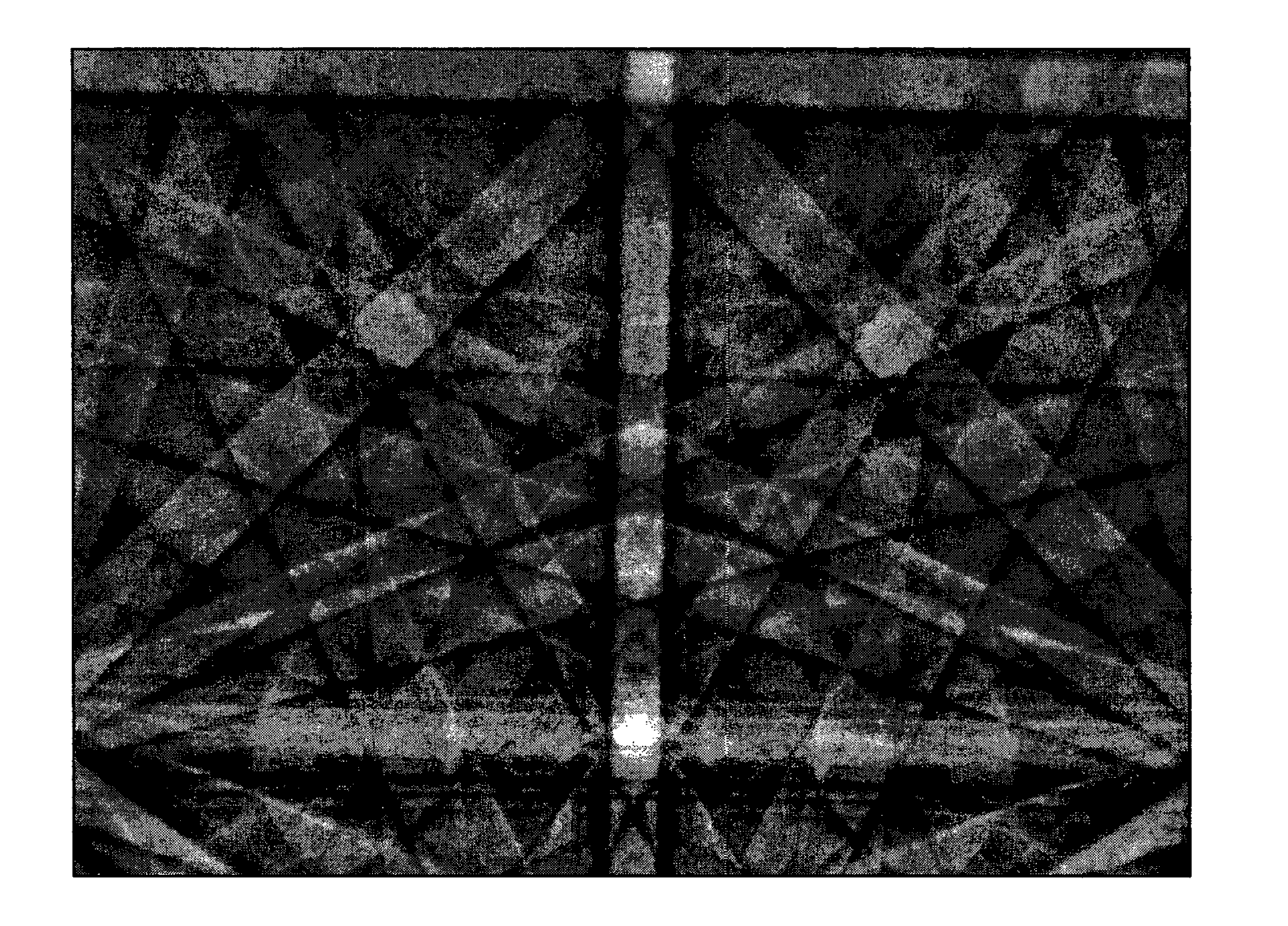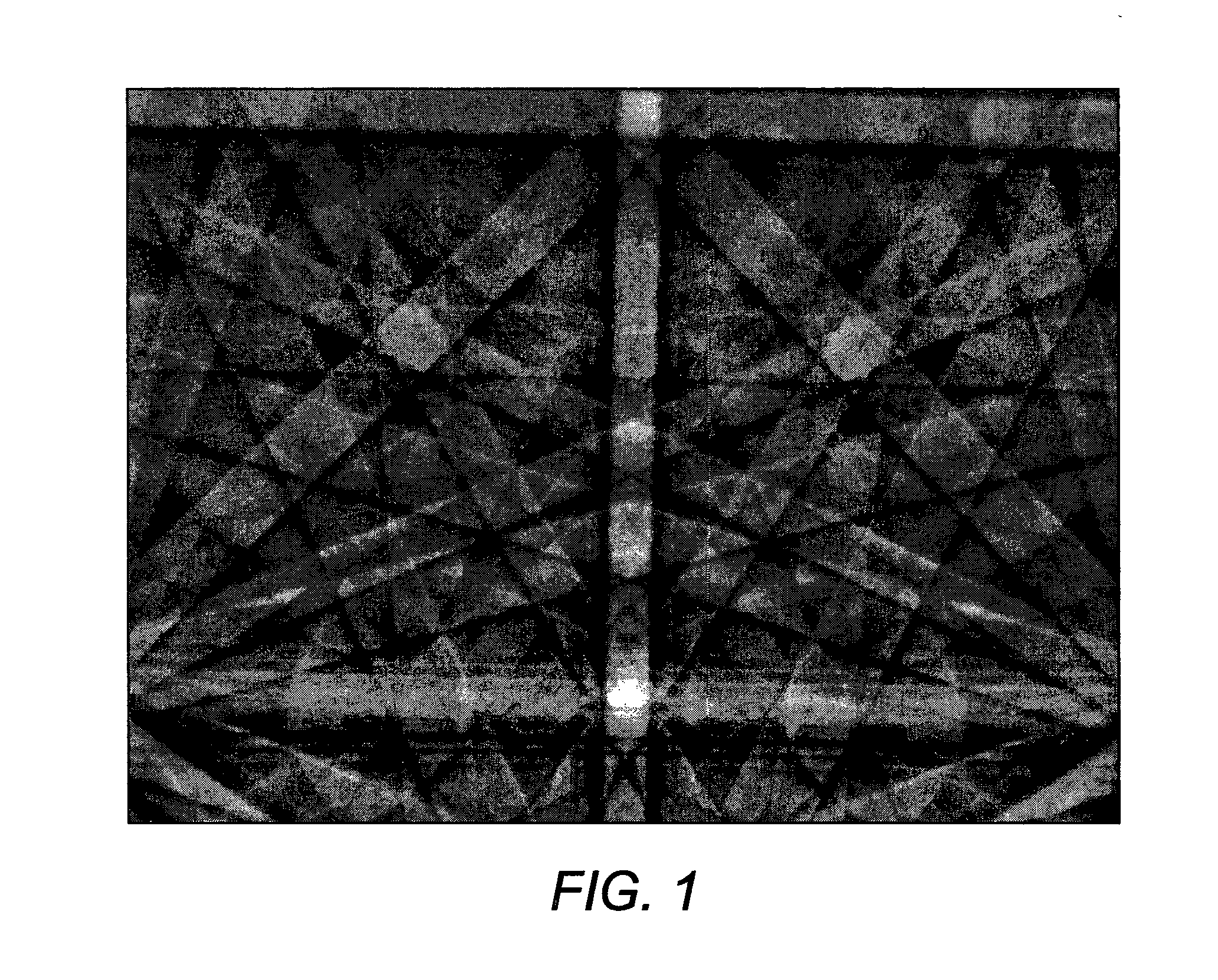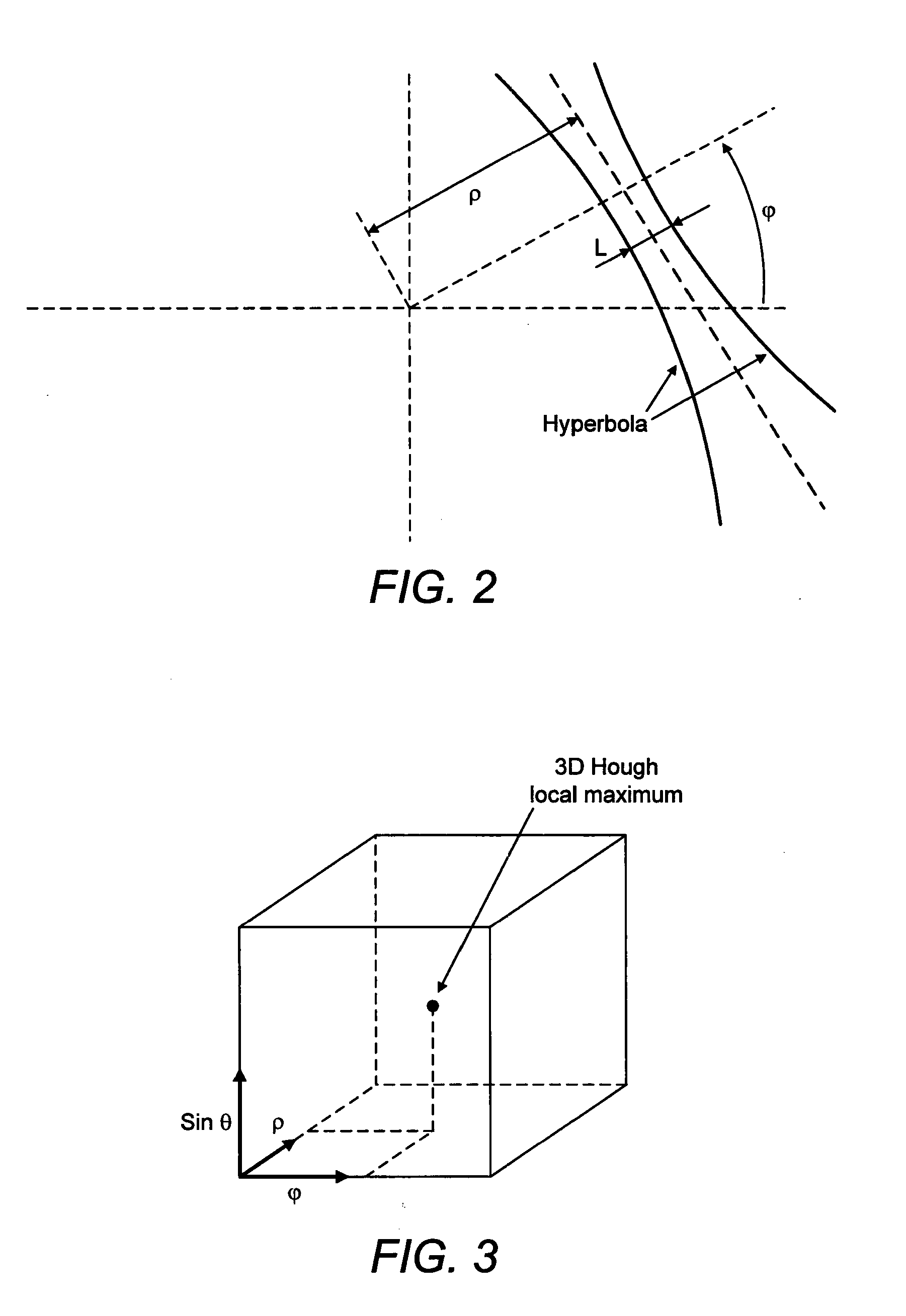Method of electron beam diffraction analysis
a technology of electron beam and electron beam, applied in the field of electron beam diffraction analysis, can solve the problems of limited accuracy, much greater accuracy, and computation effort not spent evaluating
- Summary
- Abstract
- Description
- Claims
- Application Information
AI Technical Summary
Benefits of technology
Problems solved by technology
Method used
Image
Examples
Embodiment Construction
[0043]The example we now describe is a particular implementation to increase precision in orientation mapping and phase identification, and does not preclude other embodiments that may be used to calculate plastic deformation in the crystal, or to map out sub-grain structures for example.
[0044]The method may be performed using largely conventional EBSD analysis apparatus, this of course including a chamber for containing a sample to be analysed, an electron beam source and a detector for obtaining EBSD data. The apparatus should also contain or be in communication with a computer system for performing the analysis of the data. Such a computer system may contain a database of materials data allowing simulations of EBSD data to be made and specific known materials to be identified. As will be understood such a computer system may include distributed devices such as a remote database of materials accessible over a network such as the Internet.
[0045]We now refer to FIG. 4 which is a flo...
PUM
| Property | Measurement | Unit |
|---|---|---|
| Bragg angles | aaaaa | aaaaa |
| size | aaaaa | aaaaa |
| crystallographic properties | aaaaa | aaaaa |
Abstract
Description
Claims
Application Information
 Login to View More
Login to View More - R&D
- Intellectual Property
- Life Sciences
- Materials
- Tech Scout
- Unparalleled Data Quality
- Higher Quality Content
- 60% Fewer Hallucinations
Browse by: Latest US Patents, China's latest patents, Technical Efficacy Thesaurus, Application Domain, Technology Topic, Popular Technical Reports.
© 2025 PatSnap. All rights reserved.Legal|Privacy policy|Modern Slavery Act Transparency Statement|Sitemap|About US| Contact US: help@patsnap.com



